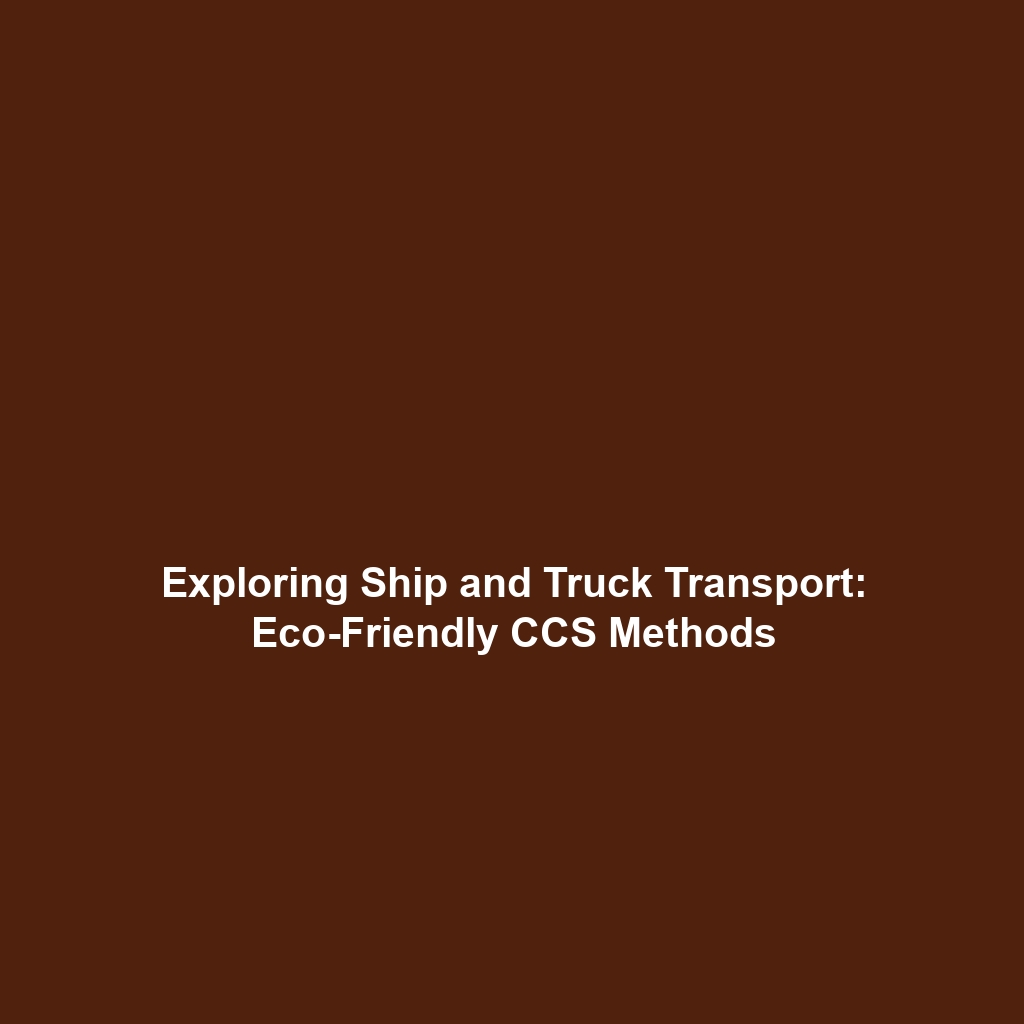Ship and Truck Transport: Alternative Transport Methods in Carbon Capture & Storage (CCS)
Introduction
As global efforts to combat climate change intensify, Carbon Capture and Storage (CCS) technologies have gained significant traction. Among the various methods employed, ship and truck transport are emerging as crucial alternative transport methods to facilitate the movement of captured carbon dioxide (CO2). This article delves into the significance and application of these transport methods within the realm of CCS, shedding light on their potential to enhance the efficacy of reducing greenhouse gas emissions.
Key Concepts
Understanding the fundamental concepts of ship and truck transport in CCS is vital for grasping their importance in mitigating climate change:
- Ship Transport: This method involves the use of maritime vessels to transport large quantities of liquefied CO2 across oceans to sites suitable for geological storage, offering economies of scale and lower costs for long distances.
- Truck Transport: Often employed for short distances, truck transport provides flexibility and ease of access to remote carbon storage sites, enabling efficient movement of captured CO2.
- Integration into CCS: Both transport methods are critical for establishing a comprehensive CCS infrastructure that ensures captured CO2 is safely and efficiently delivered to storage sites.
Applications and Real-World Uses
Exploring the applications of ship and truck transport within CCS, we find several promising examples:
- Maritime CO2 Transport Systems: Initiatives like the Northern Lights project in Norway demonstrate the use of ship transport for large-scale CO2 delivery to offshore storage sites.
- Local Carbon Capture Operations: Truck transport is widely used in regions where CO2 capture facilities are localized, facilitating transport to nearby storage locations.
These examples highlight how ship and truck transport are used in the Carbon Capture & Storage context to ensure effective carbon management.
Current Challenges
Despite the advantages of these transport methods in CCS, several challenges persist:
- Infrastructure Requirements: Developing the necessary infrastructure for efficient transport and storage can be costly and time-consuming.
- Regulatory Hurdles: Policies and regulations surrounding emissions and transport of CO2 can vary significantly between regions, complicating operations.
- Environmental Concerns: The environmental impact of transportation logistics must be carefully managed to avoid negating the benefits of CCS.
Future Research and Innovations
Looking to the future, ongoing research and technological innovations promise to address current limitations in ship and truck transport for CCS:
- Advanced Vessel Designs: Innovations in ship design are focusing on improved energy efficiency and reduced emissions.
- Smart Logistics Solutions: The integration of AI and IoT can optimize route planning and reduce costs associated with truck transport.
- Public-Private Partnerships: Collaborations are crucial as governments and companies work together to develop robust CCS transport networks.
Conclusion
In summary, ship and truck transport play an essential role in advancing Carbon Capture and Storage (CCS) technologies. The efficiency and effectiveness of these alternative transport methods are crucial for the successful implementation of large-scale CCS projects. As research continues and innovations emerge, transporting carbon dioxide via ship and truck will likely evolve into a cornerstone of global carbon management strategies. Explore more about the potential of CCS in our related articles for a deeper understanding of this critical field.
